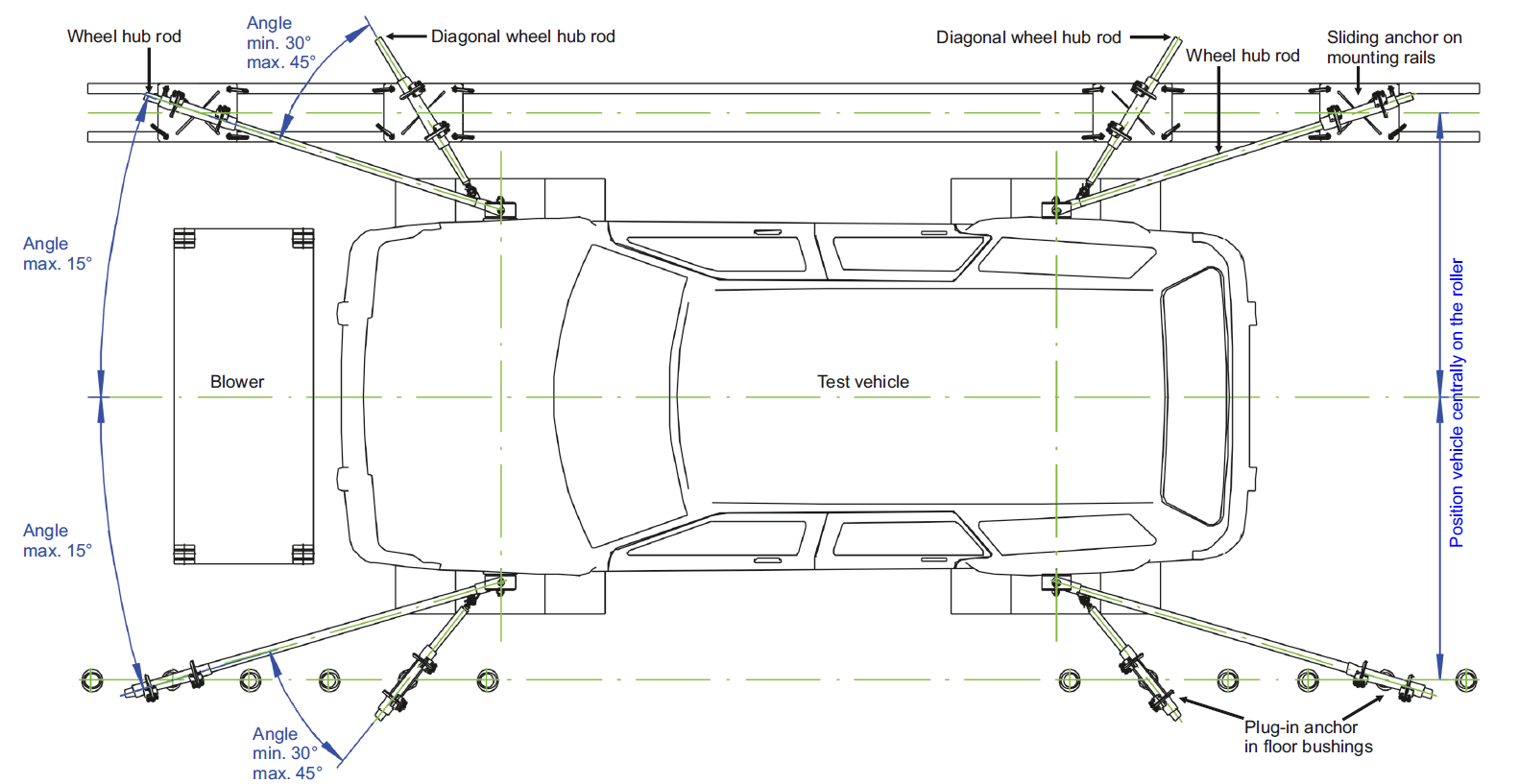Wheel hub fixation
The wheel hub fixation is suitable for standard passenger cars, test vehicles and prototypes up to 3.5 t. To fix the vehicle, two fixing rods and a fixing bearing are attached to each of the moving wheels. The rotating mass at the wheel hub is negligible. The rods are clamped in plug-in or sliding anchors and thus connected to the dynamometer floor.
This type of fixation makes it possible to run all test cycles and test scenarios and can be used for all vehicle types in these weight classes.
Bearing and fixing rods
One of the two rods per fixation triangle is firmly bolted to the fixation bearing. This bearing is placed on a cone-shaped adapter that is mounted on the wheel beforehand. The bearing can be used for test runs up to 300 km/h.
The second rod is connected to the first rod by a ball lock pin. It is used for lateral stabilisation.
The wheel hub rod (RST) is bolted to the fixation bearing. This connection is made quickly, easily and yet securely with just one screw.
Clamping

Documentations
Here you will find a selection of operating instructions for wheel hub fixation.
Further information & downloads on this topic can be found in the section
Operating instructions


